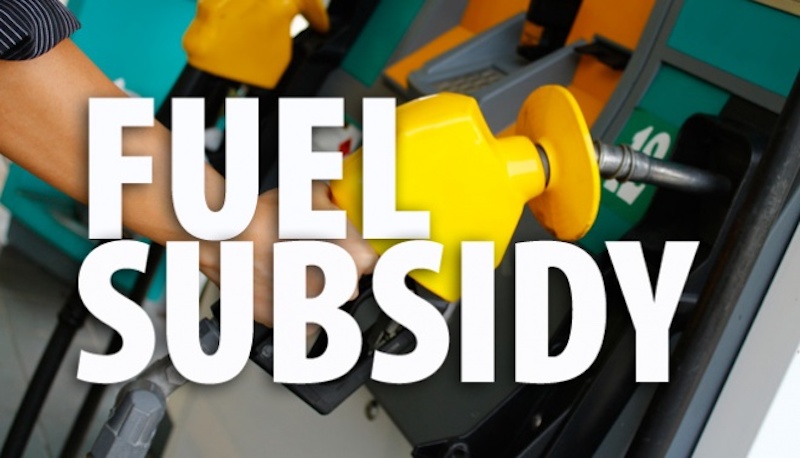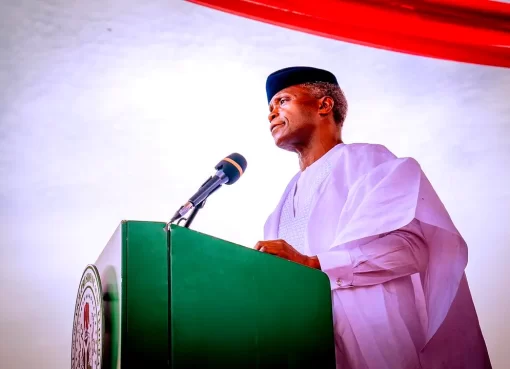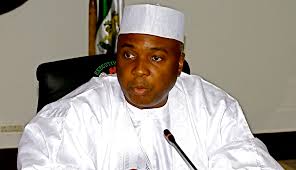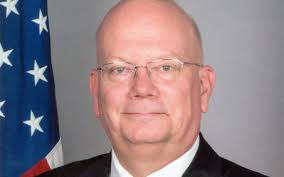The Nigerian government pays an average of N501.47 as subsidy on each litre of fuel, in at least eight Nigerian cities, PREMIUM TIMES can report.
The revelation is coming against the background of the government’s repeated denial of subsidy payment.
President Bola Tinubu had, in his inaugural address on 29 May 2023, announced the removal of the subsidy to lift a major financial burden off the back of the government.
The development caused hardship for many Nigerians with an attendant increase in the prices of goods and services.
Mr Tinubu’s announcement led to an increase in fuel price from N197 to between N480 and N570, which immediately triggered a rise in transportation fares and prices of goods and services in the country.
In July 2023, the petrol pump price was subsequently reviewed upward to N617/litre at various outlets of the Nigerian National Petroleum Company Limited (NNPC Ltd).
In recent times, there have been revelations that the government had partly reintroduced petrol subsidy, unannounced, to keep the pump price at N617, given the continued fall in the value of naira against the dollar and the price of crude oil in the international market.
But the government repeatedly denied it.
At the time, the Nigerian government said the decision to remove petroleum subsidy was a challenging one but a necessary move needed to promote long-term energy security and economic prosperity in the country.
However, PMS pricing framework trading data obtained exclusively by this newspaper shows that the government pays an average of N501.4 for each litre of petrol in eight Nigerian cities.
Details
In Lagos State, the indicative pump price at closing FX rate of N1,592.67/USD was N1,067.24 while the actual pump price was N568, indicating that the government is paying N499.24 as subsidy.
In Abuja, the indicative pump price at closing FX rate of N1,592.67/USD was N1,105.04 while the actual pump price was N617, meaning that the government is paying the sum of N488.04 subsidy for Abuja residents.
For Kano, the indicative pump price at closing FX rate of N1,592.67/USD was N1,116.34 while the actual pump price was N620, indicating a subsidy payment of N496.34.
In Calabar, the indicative pump price at closing FX rate of N1,592.67/USD was N1,081.18 while the actual pump price was N591, indicating a subsidy payment of N490.18.
In Sokoto, the indicative pump price at closing FX rate of N1,592.67/USD was N1,121.75, while the actual pump price was N620, indicating a subsidy payment of N501.75.
In Maiduguri the indicative pump price at closing FX rate of N1,592.67/USD was N1,135.42, while the actual pump price was N637, indicating a subsidy payment of N498.42.
In Ibadan, the indicative pump price at closing FX rate of N1,592.67/USD was N1,075.30, while the actual pump price was N580, indicating a subsidy payment of N495.3.
For Enugu, the indicative pump price at closing FX rate of N1,592.67/USD was N1,142.49, while the actual pump price was N600, indicating a subsidy payment of N542.49.
In April, a former governor of Kaduna State, Nasir El-Rufai, said whether the government admits it or not, the landing cost of petrol shows that there is a form of subsidy being paid.
But Nigeria’s Minister of Budget and Economic Planning, Atiku Bagudu, in an interview with PREMIUM TIMES, maintained that Mr Tinubu’s administration has scrapped subsidies on petrol.
He referred to the Petroleum Industry Act, which gave autonomy to the NNPC Ltd, as well as the policy decision of the Tinubu administration not to pay subsidy on petrol.
There is a “public policy decision, rightly, commendably and boldly, that we can’t, as a nation, afford fuel subsidy,” Mr Bagudu said.
Meanwhile, while Mr Bagudu insisted the Nigerian government is not paying subsidies on petrol, the International Monetary Fund (IMF), in a report said that the Nigerian government reintroduced petrol subsidy at the end of last year.
The IMF said subsidy payment is expected to gulp almost half of Nigeria’s projected oil revenue this year. The implicit subsidy will cost Africa’s largest crude producer an estimated N8.43 trillion of its projected N17.7 trillion of oil revenue, the IMF said in the report.
In a draft copy report of the Accelerated Stabilisation and Advancement Plan (ASAP) presented to Mr Tinubu by the Minister of Finance and Coordinating Minister of the Economy, Wale Edun, in June, the government said fuel subsidy is projected to reach N5.4 trillion by the end of 2024.
This, it said, compares unfavourably with N3.6 trillion in 2023.
Last Week, according to a report by TheCable, Mr Tinubu approved a request by the Nigerian National Petroleum Company (NNPC) Ltd to use the 2023 final dividends due to the federation to pay for petrol subsidy.
In addition, the report said the NNPC told Mr Tinubu it will be unable to remit taxes and royalties to the federation account for now because of the subsidy payments, which it termed “subsidy shortfall/FX differential”.
The report said the NNPC Ltd cried out to Mr Tinubu in June that the subsidy payments were negatively impacting its cash flow and it was struggling to remain a “going concern”.
The company said it might not be able to sustain petrol imports because of the ballooning subsidy bill, which it blamed on “forex pressure”.
But announcing a net profit of N3.297 trillion at the close of the financial year ending December 2023, last week, the Chief Financial Officer of the NNPC Ltd, Umar Ajiya, claimed that the company was not paying subsidy on petrol, saying the company was only taking care of petrol importation shortfall between it and the federation.
On Thursday, when PREMIUM TIMES contacted the Nigerian Midstream and Downstream Petroleum Regulatory Authority (NMDPRA) spokesperson, George Ene-Ita, he declined to speak on the subject.
PREMIUM TIMES






